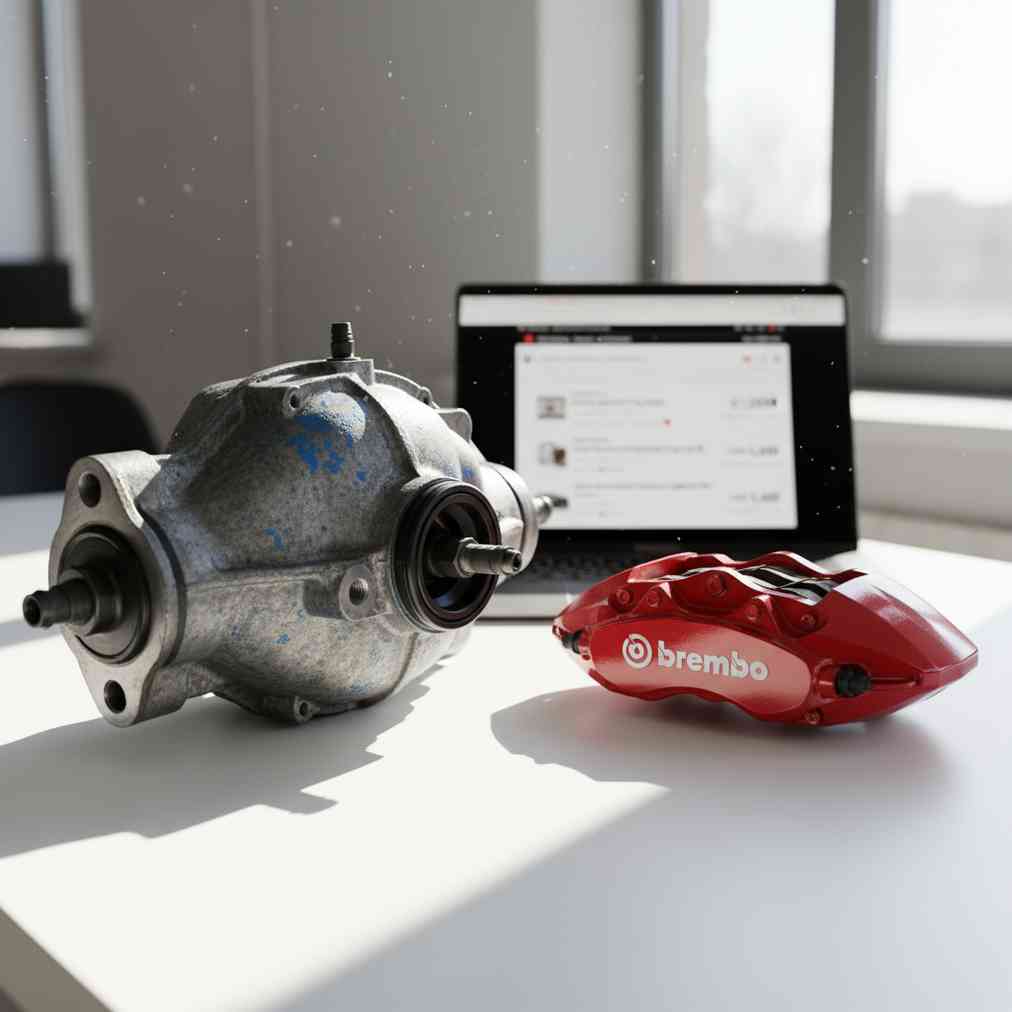Introduction to Online Salvage Auctions
Online salvage auctions have revolutionized the way automotive enthusiasts, repair shops, and budget-conscious consumers find bargain auto parts. These digital marketplaces offer access to thousands of salvaged vehicles at significantly reduced prices, creating opportunities to source OEM parts at a fraction of their retail cost. With the salvage auction market projected to reach $10.74 billion by 2025, understanding how to navigate these platforms effectively can lead to substantial savings on your automotive needs.
Whether you’re a professional mechanic looking for quality replacement parts or a DIY enthusiast working on a project car, mastering online salvage auctions can be a game-changer for your automotive repair budget. This comprehensive guide will walk you through every aspect of finding and securing the best deals on salvage parts through online auction platforms.
Understanding How Online Salvage Auctions Work
Online salvage auctions serve as digital marketplaces where insurance companies sell vehicles that have been declared total losses due to accidents, floods, theft, or other incidents. When repair costs exceed a vehicle’s market value, insurance companies recoup their losses by selling these vehicles through specialized auction platforms.
The process begins when an insurance adjuster determines that a vehicle is economically unviable to repair. These vehicles are then transported to auction yards where they’re catalogued, photographed, and listed on online auction platforms such as Copart, IAAI, and SalvageBid. Buyers can participate from anywhere in the world, bidding on vehicles ranging from minor damage cases to those suitable only for parts harvesting.
Major Online Salvage Auction Platforms
| Platform | Access Type | Inventory Size | Special Features |
|---|---|---|---|
| Copart | Dealer License Required | 200,000+ vehicles | Global shipping, detailed photos |
| IAAI | Dealer License Required | 150,000+ vehicles | Professional inspections available |
| SalvageBid | Open to public | 200,000+ vehicles | $200/year premium access |
| AutoBidMaster | Open to public | 100,000+ vehicles | International buyer friendly |
Strategic Bidding Techniques for Maximum Savings
Success in online salvage auctions requires a disciplined approach to bidding. Professional auction participants recommend following proven strategies that help maximize your chances of securing quality salvage parts at competitive prices.
Essential Bidding Strategies
- Set a strict budget: Determine your maximum spending limit before bidding begins, including all fees and transportation costs
- Research thoroughly: Obtain vehicle history reports using the VIN and research current market values for the parts you need
- Start conservatively: Begin with lower bids to gauge competition and avoid emotional bidding wars
- Use strategic timing: Consider the “sniper” method by placing your maximum bid in the final moments
- Follow the 50-70% rule: Never bid more than 50-70% of the vehicle’s repaired value
“Buyers who attend these events bring mechanical know-how or a trusted repair shop… Buyers must understand the risks before joining a salvage auction. Some vehicles show minor dents or broken bumpers. Others have major frame problems or water damage.”
Ultimate Auction Industry Expert
Understanding auction dynamics is crucial for success. Experienced bidders know that auctions held after natural disasters often provide increased inventory and potentially better deals due to higher supply.
Hidden Fees and Cost Considerations
One of the most critical aspects of salvage auction success is understanding the complete cost structure. Many new bidders focus solely on the hammer price, only to discover that additional fees can increase their total investment by 20-30% or more.
Common Auction Fees Breakdown
| Fee Type | Typical Range | Description |
|---|---|---|
| Buyer’s Premium | 5-20% of bid | Percentage added to winning bid |
| Registration Fee | $50-$200 | One-time or annual platform access |
| Internet Bidding Fee | $25-$100 | Online participation charge |
| Gate Fee | $50-$150 | Auction lot access fee |
| Transportation | $200-$2000+ | Vehicle shipping/towing costs |
| Storage Fee | $25-$50/day | Daily charge for late pickup |
When evaluating potential purchases, always calculate these additional costs into your budget. A $1,000 winning bid could easily become $1,400 after fees and transportation, significantly impacting your profit margins on high-value salvage parts.
Identifying Quality Salvage Parts in Online Listings
The key to successful salvage parts sourcing lies in your ability to accurately assess vehicle condition and part viability through online listings. Professional parts buyers have developed systematic approaches to evaluating listings that maximize their success rate.
Critical Evaluation Factors
- Damage type and location: Front-end collision damage may leave rear components intact and valuable
- Vehicle history reports: VIN checks reveal previous accidents, flood damage, and title issues
- High-quality imagery: Multiple angles showing interior, exterior, engine bay, and undercarriage
- Detailed descriptions: Clear information about whether the vehicle starts, runs, or has specific component damage
- Mileage verification: Lower mileage vehicles typically yield more valuable mechanical components
When evaluating listings for OEM replacement parts, focus on vehicles with damage isolated to specific areas. For example, a rear-end collision victim might have perfectly intact front suspension components, headlights, and engine parts that could be valuable for crash repair projects.
Red Flags to Avoid
- Flood damage indicators: Water lines, rust in unusual places, musty odors mentioned in descriptions
- Fire damage: Extensive heat damage can compromise metal integrity throughout the vehicle
- Missing key components: Vehicles with removed engines, transmissions, or other valuable parts
- Incomplete documentation: Listings lacking proper photos or detailed damage descriptions
- Suspicious pricing: Bids starting unusually high may indicate hidden reserve prices
Comprehensive Evaluation Checklist
Professional salvage buyers use systematic checklists to ensure they don’t miss critical details when evaluating auction listings. This methodical approach helps prevent costly mistakes and identifies the most profitable opportunities.
Pre-Auction Preparation Checklist
- ✓ Define specific parts needed and compatibility requirements
- ✓ Set maximum budget including fees, repairs, and transport
- ✓ Research current market values for target parts
- ✓ Identify reputable auction platforms with good seller ratings
- ✓ Set up account and verify bidding capabilities
Listing Evaluation Checklist
- ✓ VIN verification: Confirm VIN matches documentation and run history report
- ✓ Damage assessment: Analyze type, location, and extent of damage
- ✓ Visual inspection: Review all photos for exterior, interior, and mechanical components
- ✓ Title status: Understand salvage, rebuilt, or clean title implications
- ✓ Part compatibility: Verify year, make, model, and trim level match your needs
- ✓ Seller reputation: Research auction platform and seller history
For those new to salvage auctions, consider starting with vehicles that have isolated damage areas. A vehicle with side-impact damage, for instance, might still have valuable components like turbochargers, transmissions, and interior parts in excellent condition.
Recent Technology and Market Developments
The online salvage auction industry continues evolving with technological innovations that benefit both auction houses and buyers. Industry developments are making it easier than ever to evaluate vehicles remotely and participate in auctions globally.
Emerging Technologies
- AI-powered valuation: Machine learning algorithms provide more accurate pricing predictions
- Virtual reality inspections: 360-degree vehicle tours allow detailed remote evaluation
- Blockchain transparency: Enhanced record-keeping and fraud prevention
- Mobile bidding platforms: Real-time auction participation from anywhere
- Advanced analytics: Data-driven insights for better bidding decisions
Market Trends Affecting Pricing
- Electric vehicle growth: Increasing EV presence in salvage auctions requires specialized knowledge
- Global accessibility: International buyers can affect pricing for popular models
- Sustainability focus: Growing emphasis on automotive recycling drives demand
- Supply chain disruptions: New parts shortages increase salvage part values
The rise of electric vehicle parts in salvage auctions presents both opportunities and challenges. While EV components can be highly valuable, they require specialized knowledge and safety precautions for proper handling and resale.
Maximizing Your Investment: Part-Out Strategies
Successful salvage auction participants often purchase entire vehicles with the intention of selling individual parts. This approach can yield significantly higher returns than selling vehicles whole, but requires knowledge of which components offer the best profit margins.
High-Value Salvage Parts by Category
| Part Category | Average Profit Margin | Market Demand | Storage Requirements |
|---|---|---|---|
| Engine Components | 200-400% | High | Large space needed |
| Electronic Modules | 300-500% | Very High | Minimal space |
| Body Panels | 150-300% | High | Large space needed |
| Interior Components | 200-350% | Medium | Moderate space |
| Suspension Parts | 150-250% | Medium | Moderate space |
When planning a vehicle part-out strategy, focus on components with the highest demand and profit potential. OEM electronic modules, for example, often sell for 60-70% of new retail prices while costing only 10-15% of that amount at auction.
Legal Considerations and Best Practices
Operating in the salvage parts market requires understanding various legal requirements that vary by state and locality. Proper compliance protects your investment and ensures legitimate business operations.
Essential Legal Requirements
- Business licensing: Many states require auto recycler or parts dealer licenses
- Sales tax compliance: Proper collection and remittance of applicable taxes
- Environmental regulations: Proper disposal of fluids and hazardous materials
- Title handling: Correct processing of salvage and rebuilt titles
- Record keeping: Detailed documentation of purchases and sales
Recent regulatory changes have tightened some requirements for salvage title handling and parts resale. Stay informed about local laws and consider consulting with legal professionals specializing in automotive businesses.
Building Your Online Salvage Auction Success
Success in online salvage auctions comes from combining knowledge, strategy, and careful execution. Start small with lower-risk purchases while you develop your evaluation skills and understanding of market dynamics.
Consider connecting with local salvage yards and junkyards to better understand regional demand for specific parts. This market knowledge will help you make more informed bidding decisions and identify the most profitable opportunities.
Getting Started: Your First 30 Days
- Week 1: Register on 2-3 auction platforms and observe bidding patterns
- Week 2: Research 20-30 vehicles in your target categories without bidding
- Week 3: Place conservative bids on 3-5 lower-value vehicles
- Week 4: Evaluate your results and adjust strategy based on outcomes
Remember that successful auction participation requires patience and discipline. Many profitable opportunities exist, but rushing into high-stakes bidding without proper preparation often leads to expensive mistakes.
Advanced Profit Optimization Techniques
Once you’ve mastered basic auction participation, advanced techniques can significantly improve your profit margins and success rate. Professional salvage buyers employ sophisticated strategies that separate them from casual participants.
Market Timing Strategies
- Seasonal demand cycles: Summer brings higher demand for convertible parts, winter increases demand for SUV and truck components
- Weather-related opportunities: Natural disasters create inventory surges and potential bargains
- Economic factors: Recession periods often reduce competition and lower average auction prices
- Holiday scheduling: Auctions during major holidays typically see reduced bidder participation
Professional buyers also leverage comprehensive market analysis to identify undervalued vehicles that other bidders might overlook. This might include less popular colors, manual transmissions, or vehicles with cosmetic damage that doesn’t affect valuable mechanical components.
Conclusion: Your Path to Salvage Auction Success
Online salvage auctions represent an exceptional opportunity for those willing to invest time in learning proper evaluation techniques and bidding strategies. With the market continuing to grow and evolve, early adopters of best practices will find themselves well-positioned for long-term success.
Success in this field requires combining technical knowledge about vehicles and parts with business acumen and strategic thinking. Start conservatively, focus on continuous learning, and gradually scale your operations as you develop expertise and confidence.
Whether you’re looking to source parts for personal projects, supply a repair shop, or build a profitable parts business, online salvage auctions offer unmatched access to quality automotive components at competitive prices. If you’re interested in exploring local options for immediate parts needs, consider getting an instant quote for your junk car or unwanted vehicle to help fund your salvage auction ventures.
The key to lasting success lies in treating salvage auctions as a serious business endeavor, complete with proper planning, risk management, and continuous market education. With dedication and the right approach, online salvage auctions can become a reliable source of bargain auto parts for years to come.





Leave a Reply
You must be logged in to post a comment.